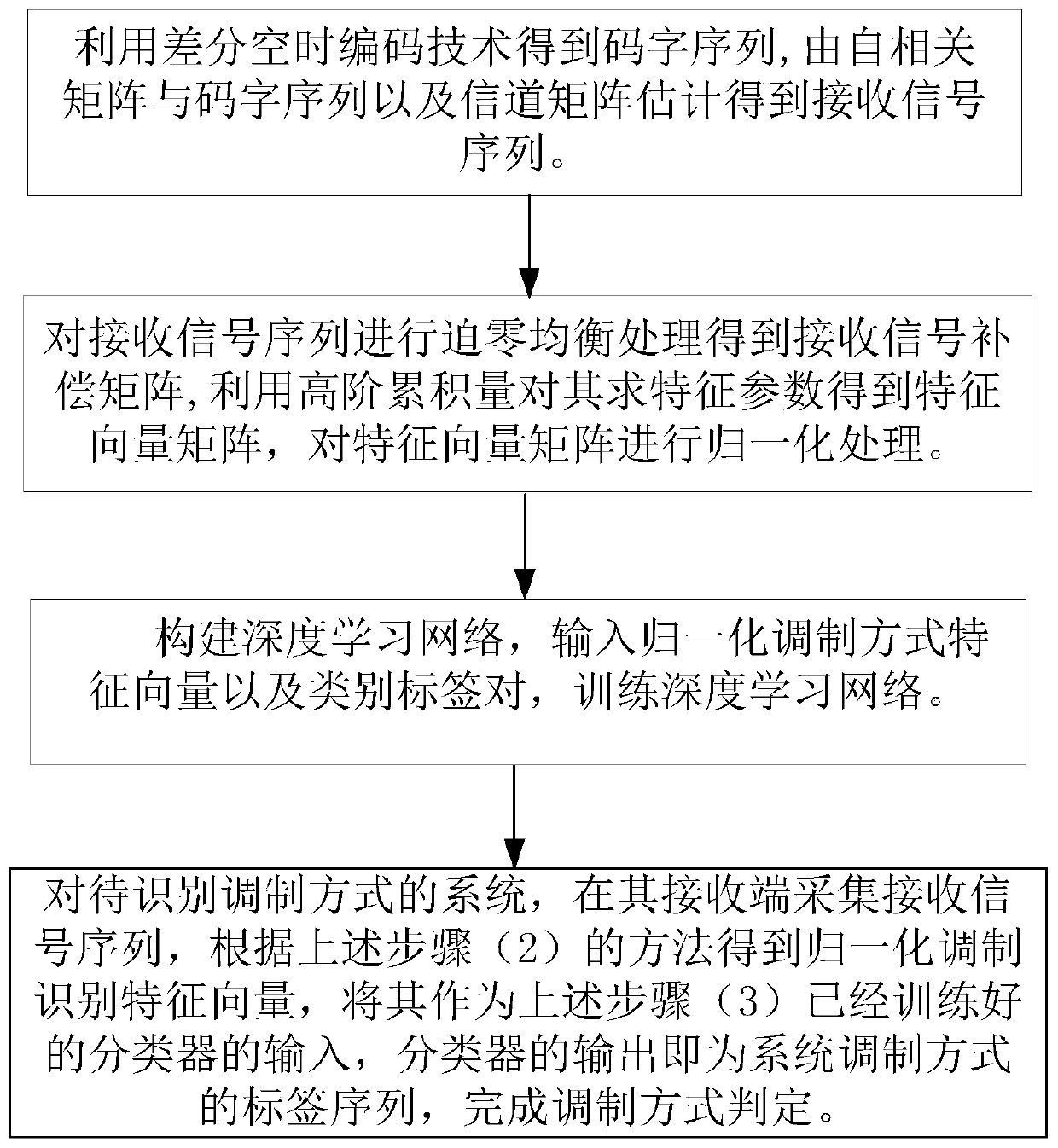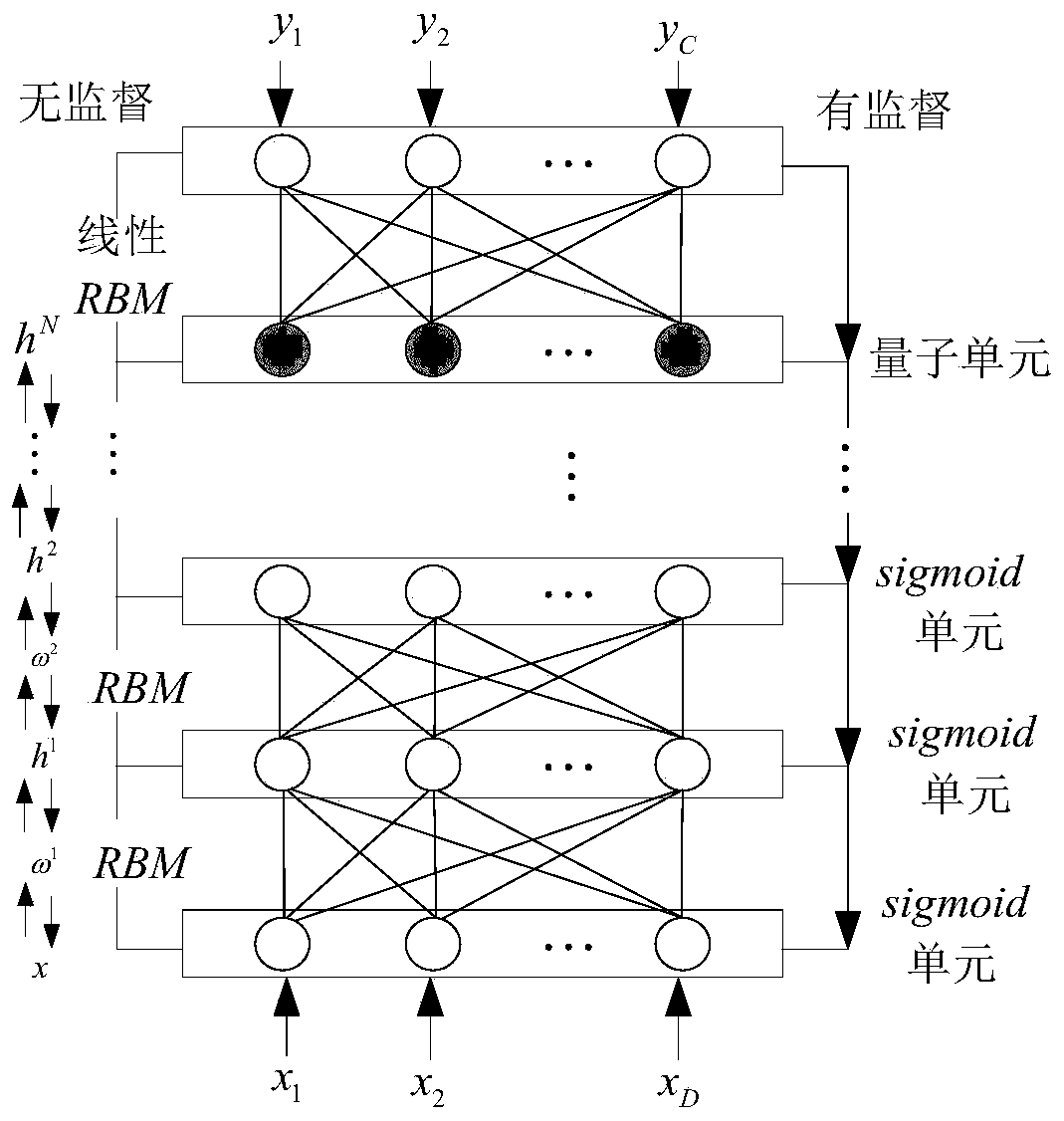A digital signal modulation mode identification method
A modulation method identification and digital signal technology, which is applied in the direction of digital transmission system, modulation carrier system, transmitter/receiver shaping network, etc., to achieve the effect of expanding range, good robustness, and good classification and recognition effect
- Summary
- Abstract
- Description
- Claims
- Application Information
AI Technical Summary
Problems solved by technology
Method used
Image
Examples
Embodiment Construction
[0030] Such as figure 1 As shown, a novel digital signal modulation identification method, the method includes the following sequential steps:
[0031] (1) Knowledge acquisition and estimation: when the communication system works in a known modulation mode, the original data flow sequence [x 1 ,x 2 ,x k ,...,x w ] Utilize differential space-time coding technology to encode, remember the codeword of the kth data stream after differential space-time coding is: where N t The value of is equal to the number of system transmit antennas; use x(k) and channel matrix to estimate the received signal sequence Among them, N r Indicates the number of receiving antennas; y(k)=Jx(k)+n(k), where, n(k) is the variance of complex Gaussian white noise sequence; J is the multipath fading channel matrix, in, is the transmitting matrix of the transmitting antenna, is the receiving antenna autocorrelation matrix, A iid is the independent and identically distributed Rayleigh fadin...
PUM
 Login to View More
Login to View More Abstract
Description
Claims
Application Information
 Login to View More
Login to View More - R&D
- Intellectual Property
- Life Sciences
- Materials
- Tech Scout
- Unparalleled Data Quality
- Higher Quality Content
- 60% Fewer Hallucinations
Browse by: Latest US Patents, China's latest patents, Technical Efficacy Thesaurus, Application Domain, Technology Topic, Popular Technical Reports.
© 2025 PatSnap. All rights reserved.Legal|Privacy policy|Modern Slavery Act Transparency Statement|Sitemap|About US| Contact US: help@patsnap.com



